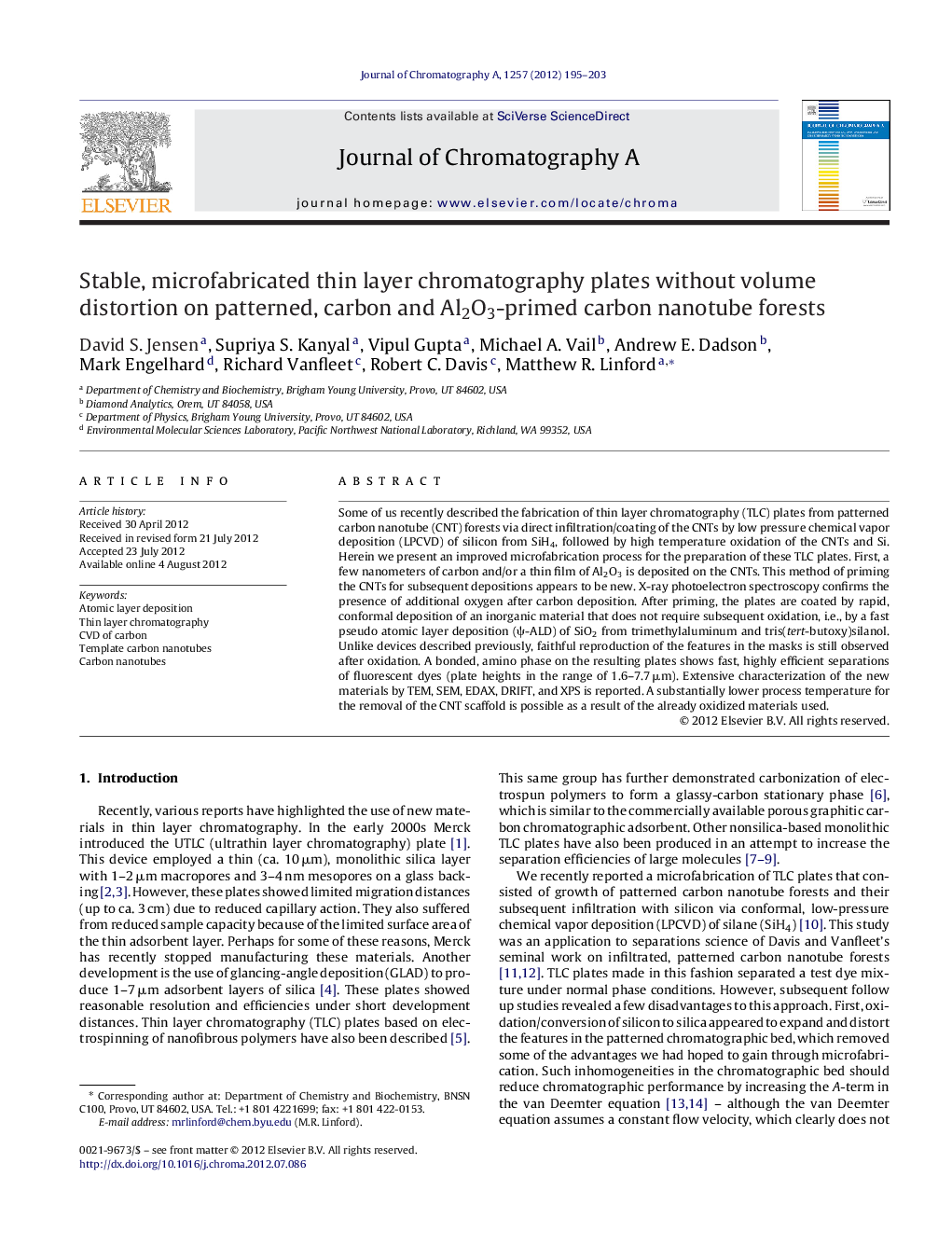| Article ID | Journal | Published Year | Pages | File Type |
|---|---|---|---|---|
| 1202026 | Journal of Chromatography A | 2012 | 9 Pages |
Some of us recently described the fabrication of thin layer chromatography (TLC) plates from patterned carbon nanotube (CNT) forests via direct infiltration/coating of the CNTs by low pressure chemical vapor deposition (LPCVD) of silicon from SiH4, followed by high temperature oxidation of the CNTs and Si. Herein we present an improved microfabrication process for the preparation of these TLC plates. First, a few nanometers of carbon and/or a thin film of Al2O3 is deposited on the CNTs. This method of priming the CNTs for subsequent depositions appears to be new. X-ray photoelectron spectroscopy confirms the presence of additional oxygen after carbon deposition. After priming, the plates are coated by rapid, conformal deposition of an inorganic material that does not require subsequent oxidation, i.e., by a fast pseudo atomic layer deposition (ψ-ALD) of SiO2 from trimethylaluminum and tris(tert-butoxy)silanol. Unlike devices described previously, faithful reproduction of the features in the masks is still observed after oxidation. A bonded, amino phase on the resulting plates shows fast, highly efficient separations of fluorescent dyes (plate heights in the range of 1.6–7.7 μm). Extensive characterization of the new materials by TEM, SEM, EDAX, DRIFT, and XPS is reported. A substantially lower process temperature for the removal of the CNT scaffold is possible as a result of the already oxidized materials used.
► Fast, highly efficient (Hobs range of 1.6–7.7 μm) separations rivaling those of HPLC. ► Rapid deposition of an inorganic material that does not require oxidation. ► For the first time a bonded phase deposited on microfabricated TLC plates. ► Extensive characterization by TEM, SEM, EDAX, DRIFT, and XPS.
